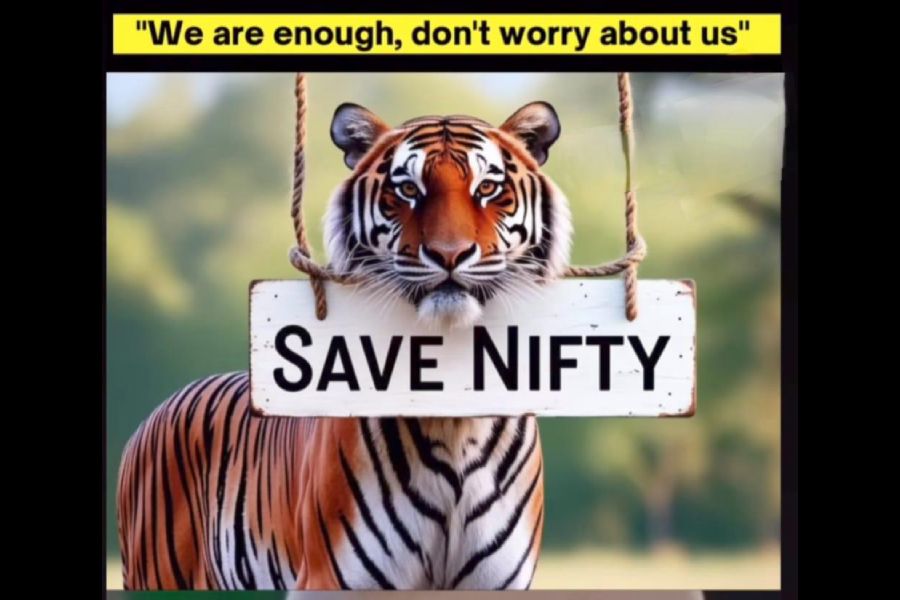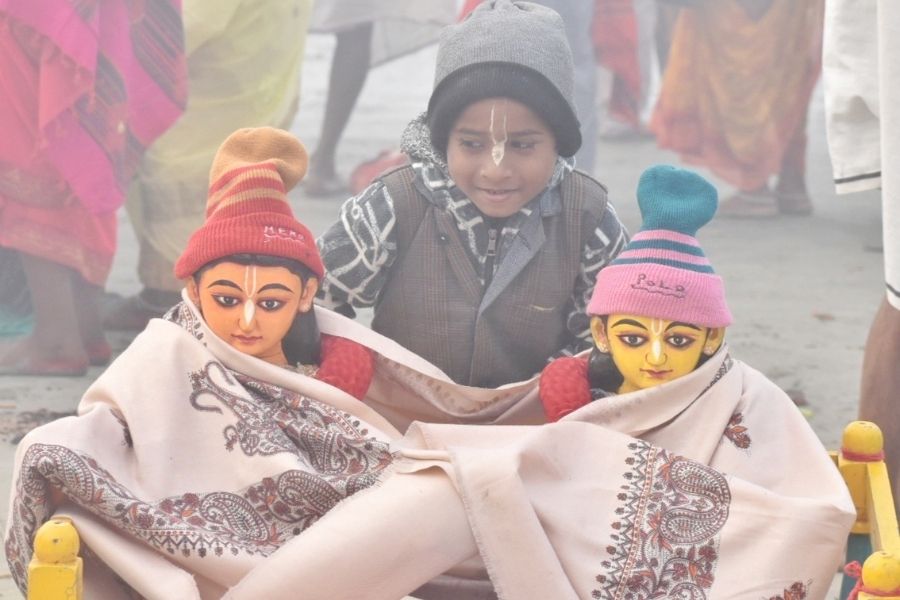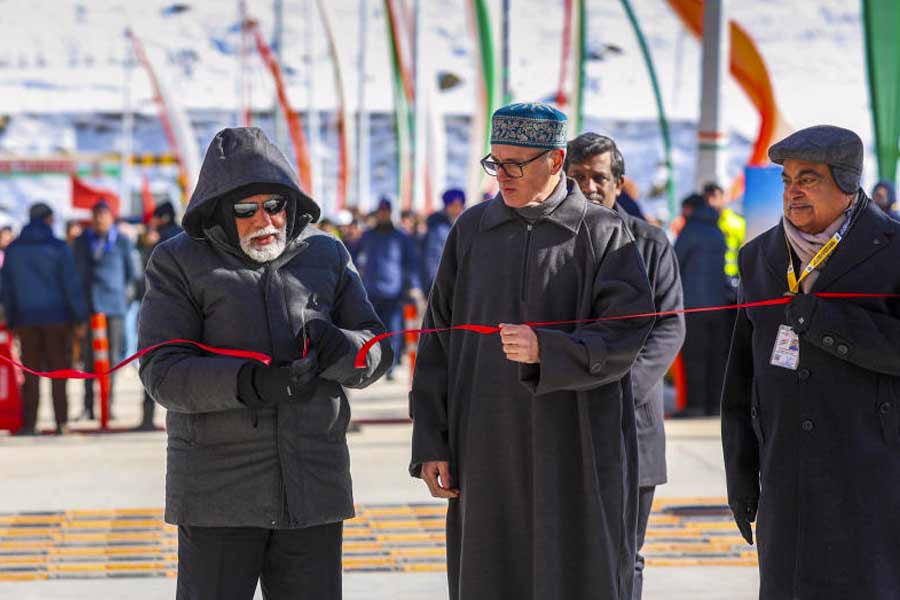 Tuesday, 14 January 2025
Tuesday, 14 January 2025
 Tuesday, 14 January 2025
Tuesday, 14 January 2025
Between the years 2005 and 2008, a former IAS officer wrote a series of letters to the Madhya Pradesh and the Union governments urging them to stop the proposed Ken-Betwa river linking project.
The former bureaucrat, who used to be posted in the area, said that the Ken-Betwa project “holds disastrous implications for the residents of Panna district as also other districts of the Ken river basin.”
No one listened to the former bureaucrat.
In September 2010, in a letter to the then Planning Commission vice-chairperson, the former bureaucrat wrote again: “On behalf of the residents of the [Panna] district, I implore you to kindly go through the attached correspondence and consider giving the matter your personal attention.”
Still, no one listened to the former bureaucrat.
Fast forward 14 years. On Wednesday, Prime Minister Narendra Modi is laying the foundation stone of the Ken-Betwa river linking project, the first such initiative under the national river interlinking policy, at Khajuraho in Madhya Pradesh.
The government is gung-ho about the project.
“Nearly 44 lakh people in 10 districts of Madhya Pradesh and 21 lakh in Uttar Pradesh will get drinking water under the project, which is estimated to cost Rs 44,605 crore,” Madhya Pradesh chief minister Mohan Yadav told PTI.
“Nearly 7.18 lakh farmer families of 2,000 villages will benefit from the project, which will also generate 103 MW of hydropower and 27 MW of solar energy.”
Not everyone is convinced. Environmental activists have long said what the former bureaucrat wrote.
“These are claimed benefits..assumptions. Not realistic. These claims are not independently scrutinised,” Himanshu Thakkar from the South Asia Network on Dams, Rivers and People told The Telegraph Online.
The Opposition Congress called the project “one more evidence of the difference between” Prime Minister Narendra Modi’s “'talk' and 'walk' on environment and forest matters”.
"The Ken-Betwa river linking project for which he is laying the foundation stone today poses a serious threat to the biodiversity-rich Panna Tiger Reserve in Madhya Pradesh," Congress general secretary in-charge communications Jairam Ramesh wrote in a post on X.
Jairam Ramesh points to Panna’s loss
Panna is the most remarkable success story of revival as by early 2009 its tiger population had been completely wiped out. Thanks to the tiger reintroduction programme launched 15 years ago, India's first, Panna now has 90-plus tigers, including cubs and sub-adults, and is thriving with sustainable tourism-based livelihoods, Ramesh said.
The project will submerge over 10 per cent of the core area of the tiger reserve, pointed out the former environment minister who had said no to the project In 2011.
"Not only prime tiger habitats – but also those of other species like vultures – will be lost. The ecosystem will be bifurcated. More than 23 lakh trees are to be felled. Construction activities will be a severe disturbance," he added.
Ramesh said that three cement factories are being planned and one has already been commissioned in the vicinity of the park.
There are questions on the basic assumptions on surplus water itself, he said.
"What is unfortunate is that there are alternatives for executing the project (like locating the dam upstream) without causing such extensive ecological damage," the Congress leader said.
Thakkar pointed out that it will take 20 years to complete the Ken-Betwa project.
Surging cost of the Ken-Betwa river linking project
Under the project, a 77-metre high and 2.13-kilometre long Daudhan dam and two tunnels (upper level 1.9 km and lower level 1.1 km) will be constructed on the Ken river in the Panna Tiger Reserve.
The first step of the project was to connect the Ken river near Panna in Madhya Pradesh with the Betwa river near Jhansi in Uttar Pradesh. That means transfer water from the Ken to the Betwa via a 221-kilometre canal to water-starved districts of Bundelkhand.
The project was to start in December 2015 with an estimated cost of Rs 7,600 crore. At present, the cost estimated stands at Rs 44,605, a whopping 486 per cent increase.
Beyond the financial cost, there are environmental costs to pay.
The Ken-Betwa River linking project could address the water and irrigation problems of Bundelkhand, according to the government.
Activists like Thakkar say there are other, less drastic ways to address the problem.
“Bundelkhand gets 900 mm of rainfall. Even higher than Marathwada, Rajasthan and Kutch area, and parts of Andhra Pradesh,” Thakkar pointed out.
The environmental cost: Too high or acceptable?
According to Madhya Pradesh CM Mohan Yadav, “The Daudhan reservoir will provide drinking water to wild animals in the Panna Tiger Reserve throughout the year, improve the forest ecosystem.”
In 2015, the then director of Panna Tiger Reserve reportedly submitted a report saying the Ken-Betwa project would impact the tiger habitat. In May that year, the government transferred the official to another reserve.
A wildlife scientist who works with a government-affiliated agency and who has worked in Panna said the habitat destruction because of the Ken-Betwa river linking project was being blown out of proportion.
“Of the 90 square kilometres [that Panna will lose], about 53 sq km is not dense forest but degraded land. Tiger population is restricted in the eastern side of the reserve, not in the forest area affected by the project. It will have no impact on tigers, vultures or ghariyal. On the contrary, the project may be beneficial given ghariyals need flowing water,” the scientist told The Telegraph Online on condition of anonymity as he is not authorised to brief the media.
According to Thakkar, the environmental cost is too high.
His estimate of the number of trees to be felled is around 46 lakh trees. There will be loss of habitat, he underlined.
Accept the loss, said the government-affiliated wildlife scientist.
“It could be a win-win opportunity for conservation. The futuristic Greater Panna Landscape Management Plan is a result of the Ken-Betwa project,” the wildlife scientist said.
Destructive development?
Environmental activists say the plan is merely on paper. Thakkar said Bundelkhand has a history of destruction in the name of development.
“Forest advisory committee said this project should not be cleared. Destroying trees would lead to decrease in rainfall. Floods will increase. There will be erosion after monsoon. Ken basin will remain backward,” Thakkar said.
But what could have been the alternative?
“Even 60 years ago Bundelkhand didn’t have a water problem,” Thakkar said. “Destruction in the name of development led to this deficit. They should have ensured there is proper ground water recharge. There should be rainwater harvesting. These are much more cost-effective.”
The Supreme Court had appointed a central empowered committee to submit a report on the project.
“The very objective…of natural evolution unhindered by human intervention will be defeated and will result in complete breakdown of the evolutionary process of millions of years,” the committee report said.
“The alternative to the main objectives of the project proposal of irrigation and alleviation of poverty have not been examined by the project proponents. The disturbance to wildlife during the construction phase will extend beyond the 6071 ha of forest proposed for diversion and will last for more than a decade exerting tremendous biotic pressure on the core of national part and critical tiger habitat,” it added.
The committee also stated that the true value of a tree, with 100 years of its lifespan remaining, would be Rs 72 lakh. The cost of felling 46 lakh trees? That is Rs 33,12,000 crore.
The big push for the Ken-Betwa project started in 2015-16, after Modi came to power. Within a year, it got environmental, wildlife and preliminary forest clearances with a condition that the project won’t touch the Panna Tiger Reserve.
A year later, a petition was filed at the Supreme Court on the wildlife clearance. In 2020, the forest clearance came in.
The national river linking plan intends to link 37 rivers through a proposed network of about 30 river links, 3,000 storages and 12,000 km of river links and canals. Of these, the Damanganga-Pinjal, Par-Tapi-Narmada, Godavari-Krishna, Krishna-Pennar and Pennar-Cauvery have already been finalised.
In 1954, the then Prime Minister Jawaharlal Nehru said “dams are temples of modern India.”
Kapil Bhattacharya, an engineer who studied rivers and criticised India’s development of rivers-dams-hydroelectric goals, was branded a traitor – an agent of then East Pakistan.
He predicted the Farakka dam would cause floods in Bihar, reduce flow into Bangladesh and increase frictions between two countries and the dams in Rupnarayan and Damodar would silt-up the Calcutta Port.
All of his predictions came true. Bihar chief minister Nitish Kumar has often blamed Farakka for the regular floods in the state.
Arthur Cotton, a British engineer, came up with the idea of Farakka barrage in 1853. He was the person who came up with the idea of linking rivers five years later.
But what will happen if India links 37 rivers to increase irrigation and water supply? A research paper, by IIT Madras and published in Nature, said: “...increased irrigation from the transferred water reduces mean rainfall in September by up to 12% in already waterstressed regions of India. We observe more drying in La Niña years compared to El Niño years. Reduced September precipitation can dry rivers post-monsoon, augmenting water stress across the country and rendering interlinking dysfunctional.”
The title of the paper is “River interlinking alters land-atmosphere feedback and changes the Indian summer monsoon.”







